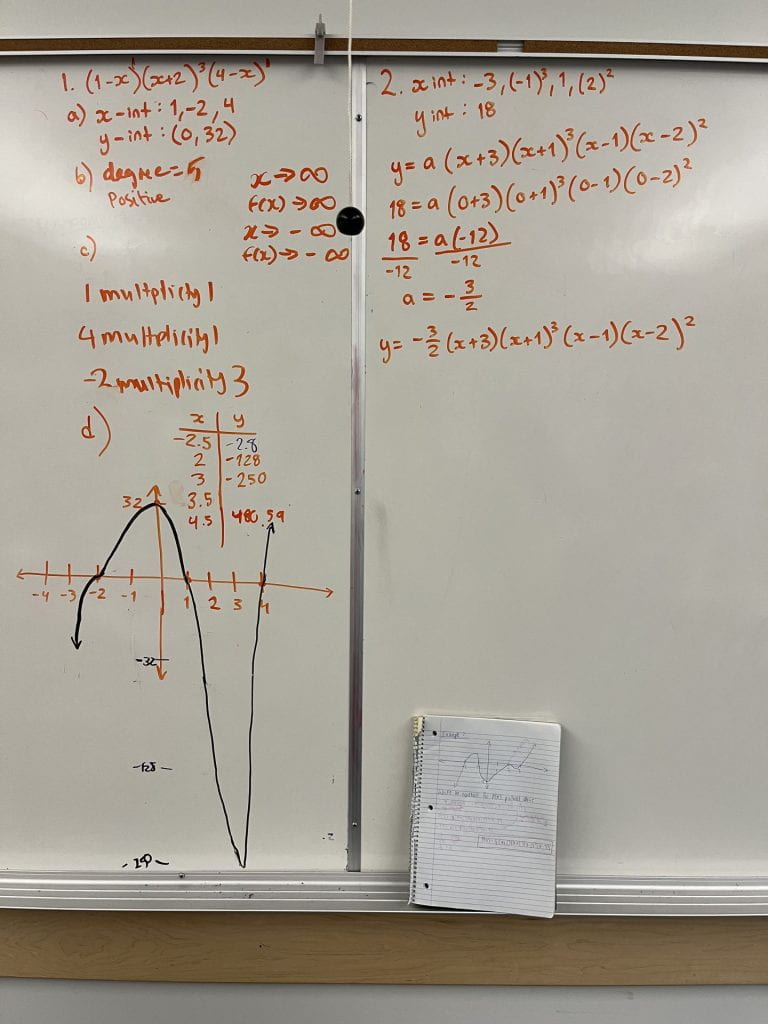https://www.desmos.com/calculator/jncco0tlaz
For my self portrait I used many different types of functions: parabolas, hyperbolas, circles, and ellipses. I used a picture of myself as a base to make my features accurate and built my graphs on top of it. To put the graphs in the right places on my face, I used letters in the formulas as sliders. I quickly found that I was running out of letters, but solved this by entering the value of the slider in place of the letter in the formula. Doing this I was able to re-use letters and my functions were still in the right location and the right shape. I made the face shape from two parabolas which emphasizes the cheekbones and makes accurate chin and forehead proportions that could not have been achieved with an ellipses. My neck is two sides of a hyperbola to have a uniform length on both sides, because my face is not perfectly symmetrical one side overlaps with my chin. I chose to form my hair with parabolas to convey that it is not completely straight. My lips are made up of a mixture of parabolas, and two ellipses for the cupids bow. With the ellipses I was able to get a better, sharper curve for the top lips. The bridge of my nose is made of two sides of a hyperbola, the bottom with a parabola, and the nostrils with two restricted circles. These shapes help convey the unique shape of my nose. I chose to make my eyebrows and eyelids with parabolas because they are surprisingly parabola shaped, this can be seen if you un-hide my reference photo on the graphs. My eyeliner is made up of straight lines, I wish it looked that straight in real life, and my eyelashes are slightly curved parabolas. Finally for my eyes I chose parabolas for the inner corners, ellipses for the eye shape and irises, and circles for the pupils. I used all these to form an accurate shape of my eyes without pointy sections which I would have gotten with other functions.
I believe that I am extending in this project and went beyond the basic criteria. I used very exact measurements and restrictions for my functions and the features aren’t mirrored over the y-axis. This makes my graph look more realistic, nobody is perfectly symmetrical. I also found out how to use shading to fill in my shapes and filled in some very finicky sections like the lips and eyeliner. I used an online colour picker app to make all my lines the same colour as the features they represent. I found the RGB colour codes for my features from my reference photo. I think I went above and beyond in making the portrait realistic not just with functions, but with the use of colour as well.


